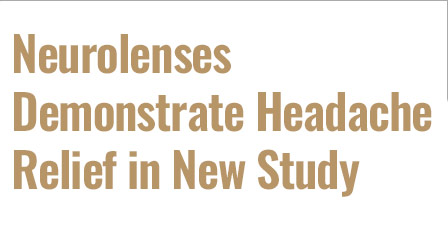Intravitreous triamcinolone acetonide (IVTA) has become an increasingly popular method to treat macular disease amongst vitreoretinal surgeons. While data from randomized controlled clinical trials are lacking, IVTA has quickly found widespread application for a variety of posterior segment pathologies based on encouraging clinical case series. In this article, we’ll review the various complications that have been reported, along with their treatment and outcomes.
Background
IVTA has been used as monotherapy to treat macular edema of various etiologies including: pseudophakic cystoid macular edema (Irvine-Gass syndrome); macular edema from central retinal vein occlusion (CRVO); branch retinal vein occlusion (BRVO); diabetic macular edema (DME); retinitis pigmentosa; uveitis; and idiopathic cystoid macular edema. In the management of neovascular age-related macular degeneration, IVTA has been applied as monotherapy for occult lesions and as combined therapy with verteporfin photodynamic therapy for all types of choroidal neovascular membranes. Additionally, IVTA has been used as a surgical adjunct for perioperative control of ocular inflammation and intraoperative identification of vitreoretinal tissue planes (posterior hyaloid and epiretinal membranes).
 |
| Figure 1. Non-infectious endophthalmitis: A white pseudohypopyon was seen two days after IVTA injection. Residual subconjunctival hemorrhage is seen as a result of the injection, but the eye is otherwise quiet. |
 |
| Figure 2. Non-infectious endophthalmitis: White, crystalline-appearing clumped corneal endothelial precipitates one day following IVTA injection. A layered pseudohypopyon or true hypopyon was not seen in this patient, nor were vitreous cells seen. |
Table 1 summarizes many of the papers on IVTA-induced ocular hypertension. In all of these studies, mild to moderate intraocular pressure elevation was seen in a minority of patients, typically in the first three months following IVTA injection. This was usually well-controlled with topical antiglaucoma agents. No patient in these studies required trabeculectomy or tube-shunt procedures to control refractory IOP elevation. One study found no association between multiple IVTA injections and significant IOP elevation.3 A known history of open-angle glaucoma does not appear to increase the risk of IVTA-induced ocular hypertension.3
Although most reports of IVTA-induced ocular hypertension have demonstrated a good response to topical antiglaucoma therapy alone, two recent studies have reported “intractable” cases. In one, three cases were reported that required surgical glaucoma intervention within one week of IVTA injection.4 This type of presentation appears to be the exception, however. In another study, one patient required glaucoma filtration surgery and vitrectomy to remove the residual corticosteroid on the eighth post-injection week for an IOP of 52 mmHg despite maximal medical therapy.4
| Table 1. Ocular Hypertension after IVTA Injection | ||
| Study (Year) | Study Type (#) | Findings |
| Gillies, et al (2004) | Prospective, randomized IVTA (76 eyes) to placebo (75 eyes). | • Mild to moderate IOP elevation in 32 IVTA eyes compared to three placebo eyes. (P<0.001) |
Infectious endophthalmitis has been reported in three studies (See Table 2). In one retrospective multicenter study, acute infectious endophthalmitis was identified in eight of 922 eyes following IVTA injection for a rate of 0.87 percent.5 The diagnosis was made at a median of 7.5 days following injection. All patients presented with pain, and six of eight had a red eye. Intraocular cultures were positive in seven of eight cases. Despite aggressive intervention, three patients deteriorated to the no light perception level and one eye was enucleated. The cases in this study represented some of the very first patients treated with this new modality at several different centers (including an international site). It is believed that the relatively high rate of infectious endophthalmitis in this study is attributable to the fact that these patients were treated early in the “learning curve” of intravitreal triamcinolone acetonide therapy. Nevertheless, awareness of infectious endophthalmitis following IVTA injection was heightened. This prompted greater awareness for the need of a sterile procedure, emphasizing the use of povidone-iodine preparation and lid speculum.6
Another group reported two cases of infectious endophthalmitis after 440 injections of IVTA for a rate of 0.5 percent.7 Interestingly, neither patient presented with pain. One of the patients had a hypopyon and both had diffuse ocular inflammation. One case of Mycobacterium chelonae abscessus endophthalmitis was reported following IVTA injection.8 The 63-year-old diabetic patient presented one month after IVTA injection with painless loss of vision. The patient eventually underwent enucleation.
 |
 |
| Figure 3a. Infectious endophthalmitis. A yellow-white true hypopyon was seen four days after IVTA injection. The conjunctiva was chemotic and red. 3b. Higher-power view of the anterior chamber demonstrates the presence of fibrin. Staphylococcal epidermidis was isolated from the vitreous tap. | |
A recent clinical example of a patient with infectious endophthalmitis after IVTA can be seen in Figure 3. Figure 3a demonstrates a heavily congested red eye with diffuse chemosis and yellowish hypopyon. The higher-power view of the anterior chamber (See Figure 3b) demonstrates anterior chamber fibrin and pigment, all strongly suggestive of infectious endophthalmitis. Visual acuity was hand motions and intraocular cultures yielded Staphylococcus epidermidis.
Several studies have described non-infectious endophthalmitis after IVTA (See Table 3). In one study, one of 16 patients (6.3 percent) developed a “whitish” pseudohypopyon without pain or other signs of ocular inflammation.9
Microbiological analysis of an anterior chamber lavage sample was unremarkable. In another study, one of 29 patients (3.4 percent) developed a pseudohypopyon consisting of “white crystals” in the inferior anterior chamber angle.10 There was no pain or redness and resolution was seen by four days without directed intervention.
One group described the clinical presentation of pseudoendophthalmitis in seven patients out of a series of 104 injections (6.7 percent) of IVTA.11 Five patients were pseudophakic, and five had had prior vitrectomy. In all patients, significant anterior chamber cell and flare and diffuse vitritis were observed. The authors noted the inflammatory debris to be distinct from the triamcinolone particles. A hypopyon with a slightly yellow color was described in four patients, and the authors felt this did not represent triamcinolone accumulation. Six of the seven patients were treated as an infectious endophthalmitis, although cultures were negative. The seventh patient was observed and treated only with prednisolone acetate 1% and experienced complete resolution within three weeks time.
Non-infectious endophthalmitis was seen in seven of 440 (1.6 percent) IVTA injections in another series.7 All seven eyes were described as having a pseudohypopyon, and all were managed by observation alone (no vitreous tap or injection). Another description of pseudoendophthalmitis after IVTA injection involved four of approximately 600 patients (6.7 percent).12 These patients shared common features, including painless loss of vision and diffuse vitreous haze. One patient was treated as a suspected infectious endophthalmitis, though intraocular cultures were negative. The other three were observed and resolved without intervention.
Pseudohypopyon (triamcinolone crystals in anterior chamber) was described in seven of 828 patients (0.8 percent) within three days of receiving an IVTA injection.13 No patient was suspected of having infectious endophthalmitis. No patient, therefore, received an intravitreal tap or injection of antibiotics, and all experienced complete resolution within two weeks. Clinical examples of a pseudohypopyon can been seen Figures 1 and 2, where the eyes appear relatively non-congested other than focal sub-conjunctival hemorrhage. White crystalline deposits can be seen lining the corneal endothelium and collecting as a white pseudohypopyon.
In summary, IVTA injection is an increasingly widespread treatment modality for numerous posterior segment disorders. Common reported complications following IVTA administration include ocular hypertension, non-infectious endophthalmitis or pseudohypopyon, and corticosteroid-induced cataract. Mild ocular hypertension may not require treatment, but some cases can develop markedly elevated IOP within the first three months of injection. This typically responds to topical antiglaucoma therapy, but rare cases require surgical intervention.
Another rare complication of IVTA injection is infectious endophthalmitis. Intense ocular congestion and pain are two features that appear to distinguish infectious from non-infectious endophthalmitis following IVTA injection. Careful attention to sterile technique and use of povidone iodine may reduce the risk of this complication. The slit-lamp appearance of white crystalline anterior chamber opacities tends to support the diagnosis of a non-infectious endophthalmitis. Potential complications associated with IVTA injection are retinal detachment and traumatic cataract. Randomized prospective clinical trials are currently under way, which will better characterize the complications associated with this exciting new therapy.
Drs. Moshfeghi and Flynn are in the Department of Ophthalmology at Bascom Palmer Eye Institute, University of Miami School of Medicine. Contact them at 900 NW 17th St., Miami, Fla. 33136. (305) 326-6000; fax (305) 326-6417; or e-mail amoshfeghi@med. miami.edu, and [email protected].edu.
1. Jager RD, Aiello LP, Patel SP, Cunningham ET Jr. Risks of intravitreous injection: a comprehensive review. Retina 2004;24:676-98.
2. Gillies MC, Simpson JM, Billson FA, et al. Safety of an intravitreal injection of triamcinolone: results from a randomized clinical trial. Arch Ophthalmol 2004;122(3):336-40.
3. Smithen LM, Ober MD, Maranan L, Spaide RF. Intravitreal triamcinolone acetonide and intraocular pressure. Am J Ophthalmol 2004;Internet Advance (In press).
4. Singh IP, Ahmad SI, Yeh D, et al. Early rapid rise in intraocular pressure after intravitreal triamcinolone acetonide injection. Am J Ophthalmol 2004;138(2): 286-7.
5. Moshfeghi DM, Kaiser PK, Scott IU, et al. Acute endophthalmitis following intravitreal triamcinolone acetonide injection. Am J Ophthalmol 2003;136(5): 791-6.
6. Aiello LP, Brucker AJ, Chang S, Cunningham ET Jr, et al. Evolving guidelines for intravitreous injections. Retina 2004;24:S3-S19.
7. Nelson ML, Tennant MT, Sivalingam A, et al. Infectious and presumed noninfectious endophthalmitis after intravitreal triamcinolone acetonide injection. Retina 2003;23(5):686-91.
8. Benz MS, Murray TG, Dubovy SR, et al. Endophthalmitis caused by Mycobacterium chelonae abscessus after intravitreal injection of triamcinolone. Arch Ophthalmol 2003;121(2):271-3.
9. Jonas JB, Hayler JK, Panda-Jonas S. Intravitreal injection of crystalline cortisone as adjunctive treatment of proliferative vitreoretinopathy. Br J Ophthalmol 2000;84(9):1064-7.
10. Jonas JB, Hayler JK, Sofker A, Panda-Jonas S. Intravitreal injection of crystalline cortisone as adjunctive treatment of proliferative diabetic retinopathy. Am J Ophthalmol 2001;131(4):468-71.
11. Roth DB, Chieh J, Spirn MJ, et al. Noninfectious endophthalmitis associated with intravitreal triamcinolone injection. Arch Ophthalmol 2003;121(9):1279-82.
12. Sutter FK, Gillies MC. Pseudo-endophthalmitis after intravitreal injection of triamcinolone. Br J Ophthalmol 2003;87(8):972-4.
13. Moshfeghi AA, Scott IU, Flynn HW Jr., Puliafito CA. Pseudohypopyon after intravitreal triamcinolone acetonide injection for cystoid macular edema. Am J Ophthalmol 2004;138(3):489-92.
14. Bakri SJ, Beer PM. The effect of intravitreal triamcinolone acetonide on intraocular pressure. Ophthalmic Surg Lasers Imaging 2003;34(5):386-90.
15. Jonas JB, Kreissig I, Sofker A, Degenring RF. Intravitreal injection of triamcinolone for diffuse diabetic macular edema. Arch Ophthalmol 2003;121(1):57-61.
16. Jonas JB, Kreissig I, Degenring RF. Endophthalmitis after intravitreal injection of triamcinolone acetonide. Arch Ophthalmol 2003;121(11):1663-4













